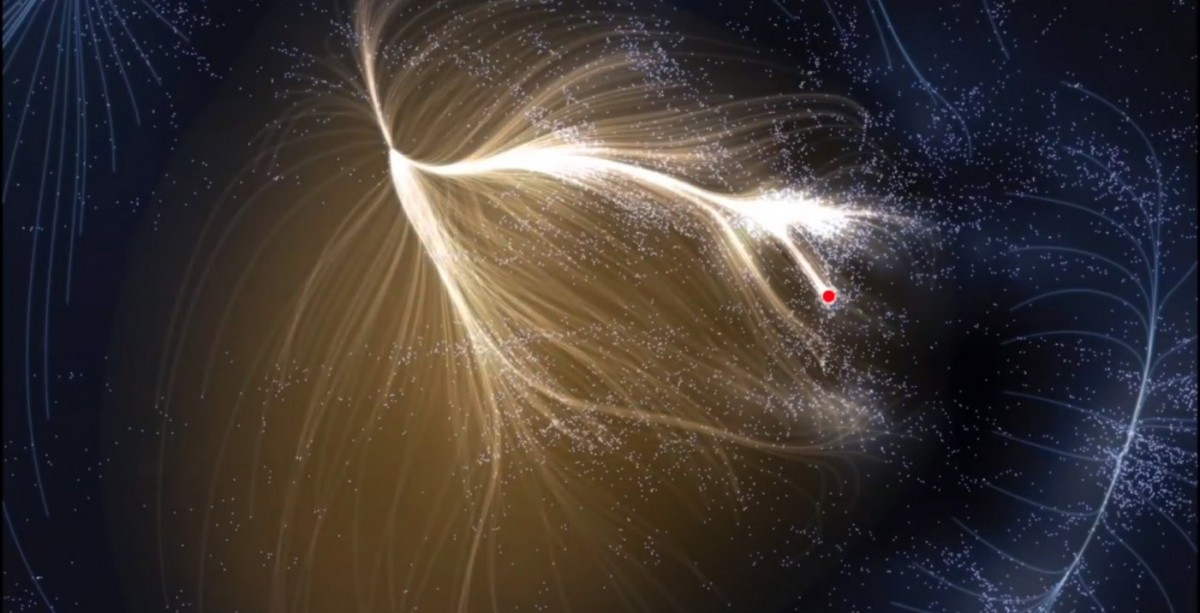 Supercluster Laniakey. The location of the Milky Way is shown in red.
Supercluster Laniakey. The location of the Milky Way is shown in red.On the largest scale, dark energy causes the expansion of the Universe to accelerate. It not only alienates distant galaxies from each other, it forces them to accelerate relative to each other. On the other hand, gravity causes matter to accumulate together, in the way our galaxy and our local group have accumulated, and can overcome this acceleration if it collects a sufficiently large amount of matter in one place. But galaxies and groups are not the largest structures known to us. In the universe, there are clusters and superclusters of galaxies, one of which is right next to us! Will any of these superclusters triumph over dark energy? Our reader asks:
If we are gravitationally connected only with Andromeda, and everything else eventually disappears from the visible region of the Universe, how can we all move towards the Great Attractor (or where are we heading to the gravity center of Laniakei )?
From the point of view of cosmic scales, there are thousands of galaxies close to us, attracting us to us.
 Markaryan chain with names of galaxies located near the center of the Virgo cluster
Markaryan chain with names of galaxies located near the center of the Virgo clusterWill they draw us to themselves, despite the dark energy? Or will dark energy make us expand quickly enough and prevent this convergence? To answer the question, we need to study three things: the expansion of the Universe, the local imperfections of this movement, and how the Universe looks in our region.
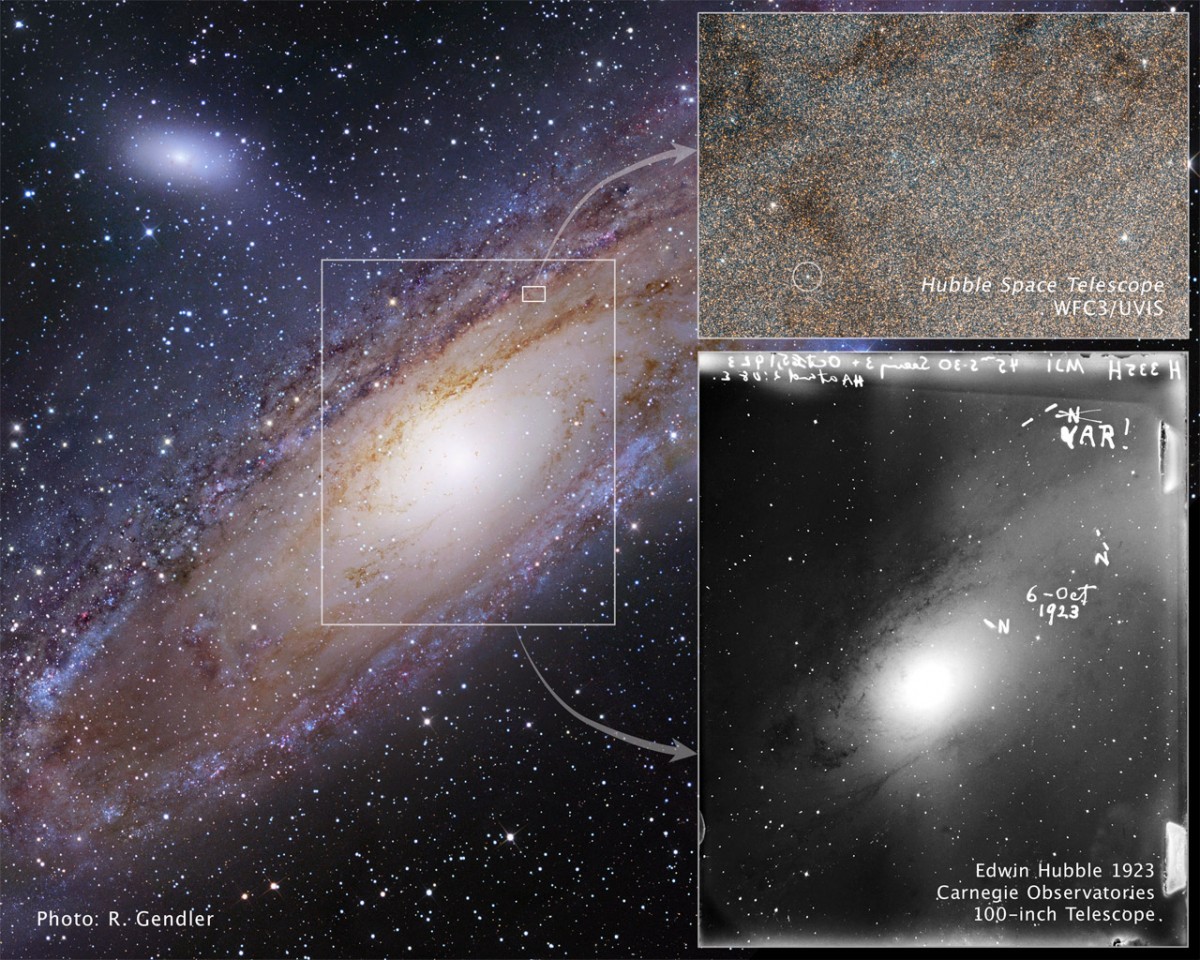 Hubble's discovery of the variable cepheid in the Andromeda galaxy, M31, opened the Universe for us
Hubble's discovery of the variable cepheid in the Andromeda galaxy, M31, opened the Universe for us1) Expansion of the Universe. In the 1920s, Edwin Hubble was able to detect a known class of stars — Cepheid variables — in spiral objects that we see in the sky. They periodically became brighter and dimmer, and different stars had different periods of time. We know the ratio of brightness to the period of its oscillations, to which all stars obey, which means that if you can measure the period of oscillations and the apparent brightness of a star, you can calculate how far away the star is from you, and hence its galaxy.
This concept is known as the standard candle method, and now we have moved from Cepheids to other properties of galaxies, to Type Ia supernovae, as the brightest and best visible candles. These methods allowed us to discover a pattern known as the Hubble law, working in all directions, no matter where we look: the speed at which an object is removed from us is proportional to the Hubble parameter multiplied by the distance to the object. You may have heard the name “Hubble's constant” before, and it really was a good way to represent what was happening in the decades before the appearance of the space telescope. Hubble, because at that time we could not look far, to the very borders of the visible Universe. But the farther we looked, the clearer it became that the expansion of the Universe not only changes in time, it accelerates, which gave us the idea that there is something more in the Universe than matter, radiation and curved space.
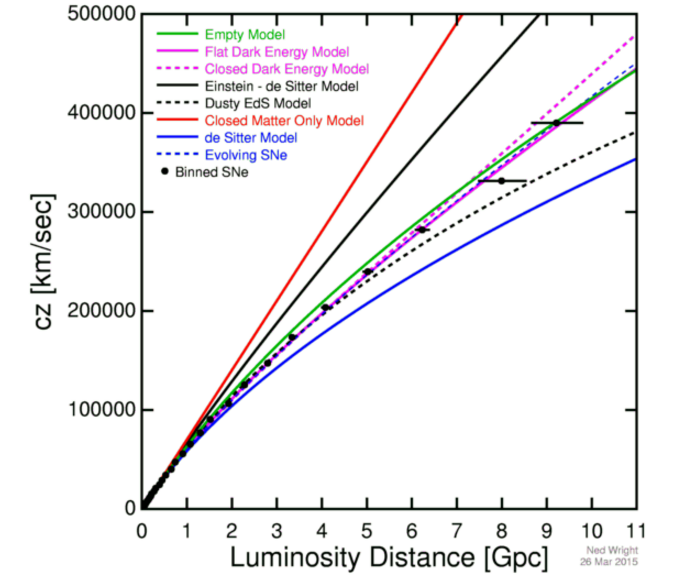 The ratio of distance to redshift
The ratio of distance to redshiftIt turned out that today the Universe consists of about 70% of dark energy, which becomes more and more important over time. When the Universe was two times younger, dark energy was not so noticeable, since its share was scanty compared to the total energy density. But as the matter and radiation erode, their density decreases, and dark energy begins to dominate the expansion of the Universe, which leads to an acceleration that we see today. This means that all structures that until now have not been connected gravitationally - have not acquired a density that is sufficiently higher than the average value - will never be linked together in this Universe. They will be scattered with acceleration under the pressure of expansion.
2) Local imperfections of this expansion. Even at distances of millions of light years, gravity has plenty of time to compress the structures of the Universe. Since the Big Bang, trillions of star clusters and hundreds of billions of galaxies have formed in the universe, and large-scale structures have become complex and saturated. The largest areas of increased density turned not only into galaxies, but also into groups and clusters of tens, hundreds, or thousands of galaxies, connected together into single structures.
The gravitational attraction of these imperfections plays a big role. If we take our nearest neighbor, the Andromeda galaxy, it is about 2.5 million light years from us. Judging by the expansion of the universe, it should move away from us. But the gravitational pull attracts the Milky Way to Andromeda, and Andromed to the Milky Way, and it can defeat the expansion if these two galaxies are massive enough. If the force of attraction between them is large enough, and was large enough for a long time, we will be gravitationally related. Although dark energy can alienate other, distant galaxies from us, we will eventually fall on each other and form a single giant structure over time.
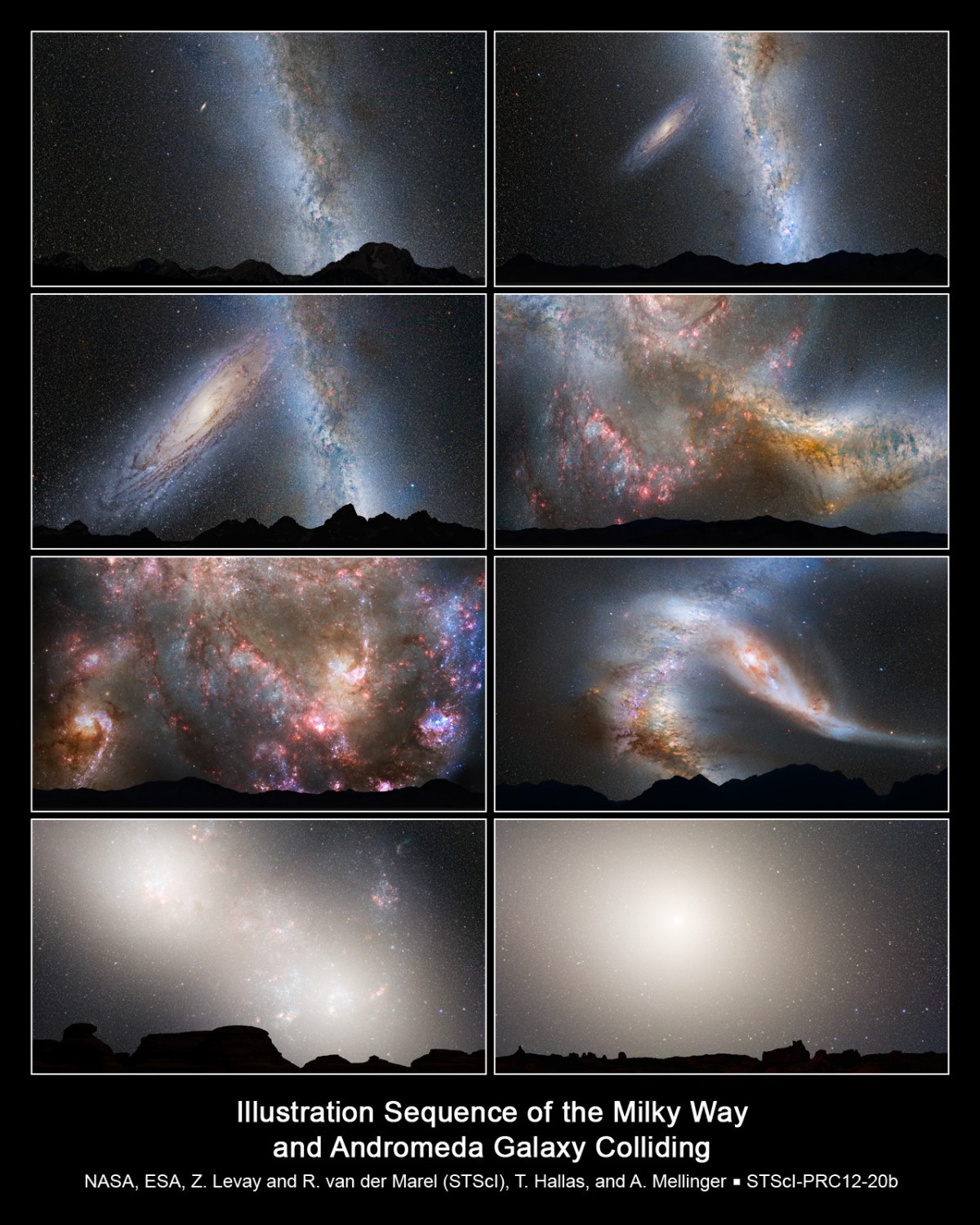 What will look like the collision of the Milky Way and Andromeda
What will look like the collision of the Milky Way and AndromedaAnd so it will be! Such is the real fate of our local group. Let us return to the reader's question - what happens to the Great Attractor and the clusters and superclusters nearest to us? To answer it, it is necessary to make a map of the region of the Universe nearest to us.
3) The structure of the universe in our region. We studied this question with 80% accuracy. Only those parts that are blocked by the galactic plane are unknown to us - from our position it is very difficult to see them. We can immediately take into account three things:
• All individual galaxies near us and their movement relative to us.
• Hubble expansion of the Universe, and how the movement of these galaxies deviates from this expansion, taking into account the distance to them.
• The masses of all objects of our environment and the implied masses of objects that are invisible to us are which masses must be present at what places in order for us to observe the movement of objects that we are observing.
We mark our local part of the Universe, the location and movement of objects, and mark the mass of local objects to see what goes where and why.
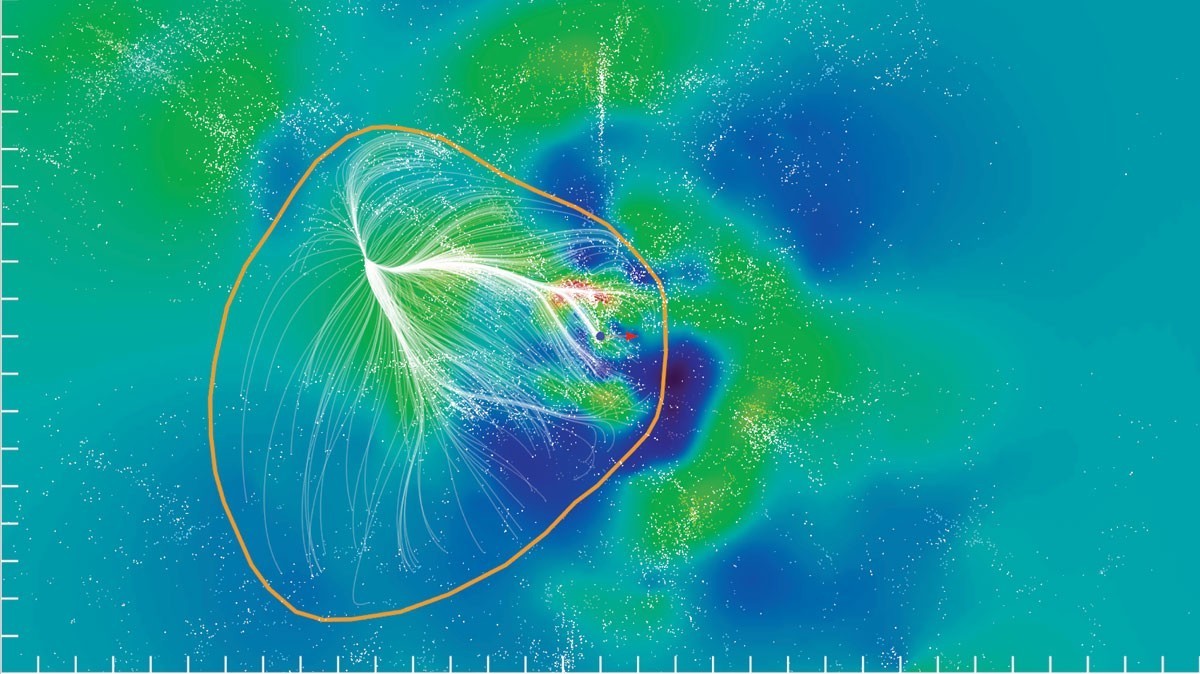
The project, which makes a map of cosmic streams, not so long ago brought all this information together, and determined that the Milky Way is gravitationally connected with a local group. Our local group is one of many groups located not far but outside the Virgo cluster, and all these groups and clusters, together with some others, form a huge superstructure known as the Laniakeya supercluster. In order to explain the movement of all local structures, in the place that was previously called the “Great Attractor,” there must be a certain mass — since all the movements of objects we observed did not correspond to the masses we found earlier.
This largest structure — the set of galaxies in Laniakee, which is responsible for the strongest attraction — forces the local group and many other galaxies from our local supercluster to move towards this mass. They deviate significantly from the Hubble movement: hundreds of kilometers per second. This is a real power, a significant effect, working against the Hubble expansion and dark energy.
But he loses them.
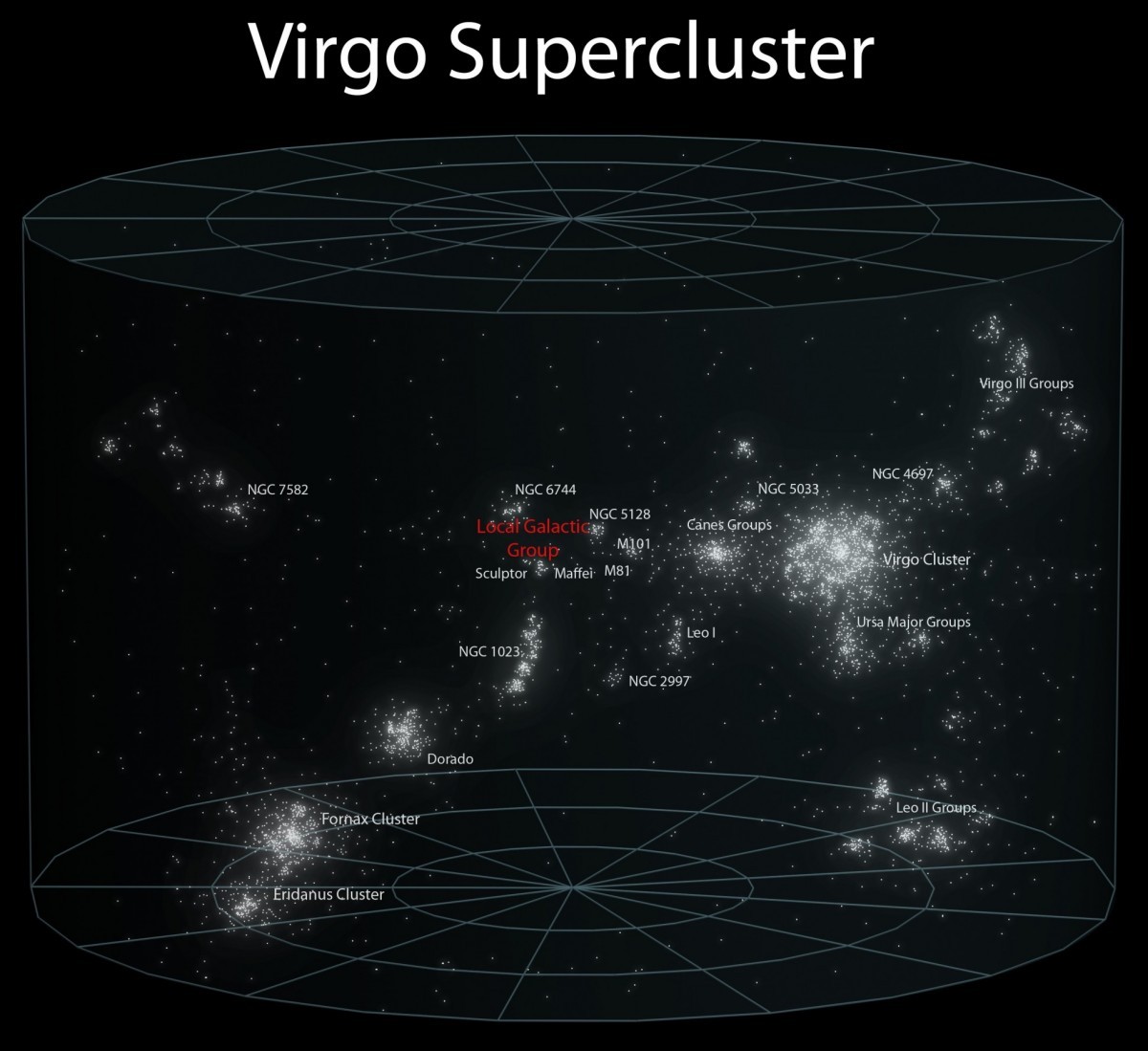 Virgo Supercluster Galaxy
Virgo Supercluster GalaxyDark energy and the existing expansion of the Universe is not only stronger than the gravitational attraction of a local supercluster - it is generally not a competition. The difference in speed, deviation from the Hubble expansion, is only 20% of what would be required to bind us to this large structure. And this structure itself is not connected gravitationally. This supercluster is only an appearance, and as the Universe evolves, Laniakey will dissolve.
So, fully answering the reader's question, we can say that we are attracted towards Laniakei, to the Great Attractor, but unfortunately this power is not enough for us to fall on it. Simply, this supercluster will move away from us more slowly than the average value, and will remain within our reach for several billion years longer, but this is only a temporary phenomenon. It is not heavy enough to hold or tighten us in the end. The fate of our local group is to be left alone in the end.